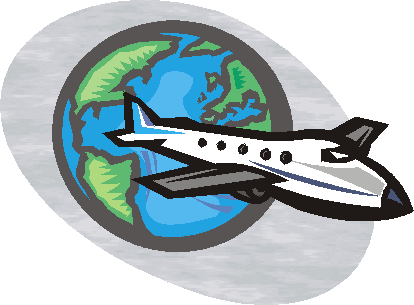 Our
Mission: "To assist our clients in developing the best possible
Safety System to meet their needs".
Our
Mission: "To assist our clients in developing the best possible
Safety System to meet their needs".
|
|
History Of
Human Factors Training For Aircraft Maintenance Personnel On May 25, 1979, the world was shocked when a DC10, taking off from Chicago, left itís number one engine laying on the runway as it struggled to remain airborne for 31 seconds before crashing in a fireball that left 273 persons dead. It didnít take long to determine that the #1 engineís rear pylon flange had failed. The pylon had been removed eight weeks before and it would be determined that it was damaged on reinstallation. Six other, supposedly serviceable DC10s, were found to have cracked pylon flanges when inspected. The NTSB report determined the cause to be "improper maintenance procedures" but nothing was done to determine the human factor "root causes" While it wasnít the first maintenance error to cause an aircraft accident, it certainly has to be the most dramatic the industry has ever witnessed and one that caused the world to look closely at the role maintenance can play in accidents. April 28, 1988 stands out as the day Alohaís Flight 243, a Boeing 737, turned into "a convertible" at 24,000 ft. It might have been almost funny except that a flight attendant was swept to her death and eight others received serious injuries among the 94 persons on board. Within six months the FAA, under the guidance of Dr. Bill Shepherd, began a series of meetings to begin dealing with the issue of Human Factors in Aircraft Maintenance. These meetings continue today as the annual international symposiums co-sponsored by the FAA (United States) the CAA (United Kingdom) and Transport Canada (Canada) as the Human Factors in Aviation Maintenance Symposium. As a result of these meetings much needed research into maintenance human factors has been carried out and continues today under the guidance of Ms Jean Watson. Almost a year later, on March 10, 1989, in Dryden Ontario, Canada got itís wake up call when a Fokker F28 crashed killing 24 persons and injuring the balance of the 68 on board. While this was not a maintenance accident, it was determined that a chronically unserviceable APU contributed to the cause and out of the 191 recommendations, one that suggested that CRM be extended down to include Aircraft Maintenance Engineers. June 10, 1990, saw the United Kingdom receive its wake up call when a cockpit window blew out at 16,000 feet and the pilot almost went with it. The maintenance error that caused the accident was a simple: use of the wrong sized screws. The accident report investigated and written by David King, is now seen as one of the first to take an in depth look at the contributing factors to a maintenance error. In 1991 Continental Airlines began what is regarded as the first human factors training program for maintenance personnel. It began CCC (Crew Coordination Concept) workshops under the leadership of John Stelly, first for its management and later to its hourly workers. In 1993 Transport Canada hired Gordon Dupont as a special programs co-ordinator to develop, in close co-operation with the industry, a human factors workshop to be called Human Performance in Maintenance Part 1 (HPIM). From this in 1994 the Dirty dozen posters were developed to be a follow up to the HPIM workshops. An Industry group, which provided guidance in the HPIM development, took on the responsibility to print the poster series. In 1996 HPIM Part 2 was finalized by the industry as a follow up to Part 1. As set of posters entitled "The Magnificent 7" were developed to be a follow up to this workshop. The workshop and posters promote the maintenance worker as a professional. In 1997 we produced the first of a series of maintenance videos entitled: "Death of an Airline." The CAA, under the guidance of David Hall, in the United Kingdom was also working on the human factors issue and in March 1998 held in Gatwick, the first of the international symposiums involving the CAA, the FAA and Transport Canada. It was called the 12th Symposium on Human Factors in Aviation Maintenance. The 13th was held at Daytona Beach, hosted by the FAA in Feb. 1999. The 14th was held in Vancouver, BC in March 2000. The last of these international symposiums (the 17th) was held in Toronto in 2003. ICAO under its amendment to Annex 6 Chapter 8 now requires all contracting states to require their approved maintenance organizations to include " training in knowledge and skill related to human performance." JAR 66 Module 9 now dictates Human Factors as part of the basic knowledge requirements for a JAR 66 aircraft maintenance license. In 1999 Canada complied with the ICAO requirement as did, the UK, Australia the JAA and a number of other contracting states. In 1999 System Safety Services came into being to assist in the implementing of the ICAO requirement for human factors training. Human Factors training, to help the maintenance person avoid the error he never intends to make, has finally arrived. email: dupontg@system-safety.com
|